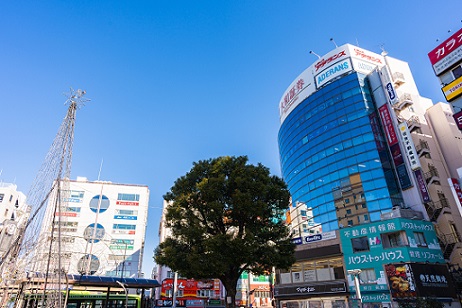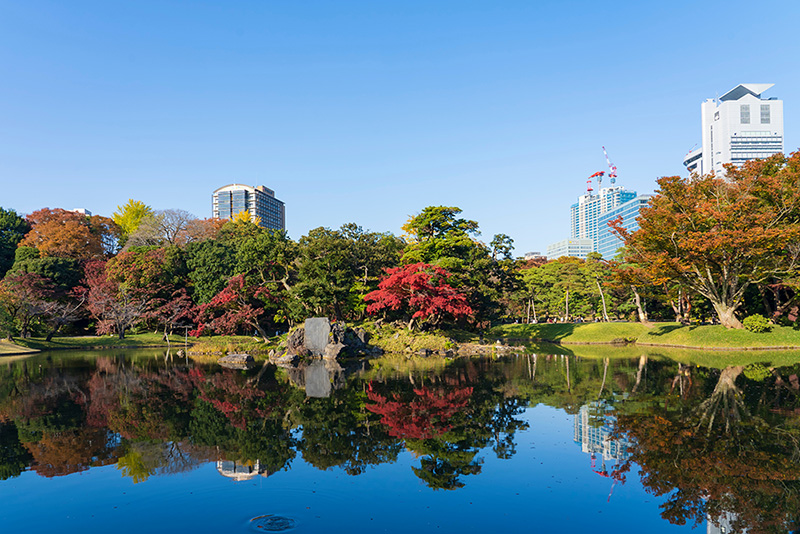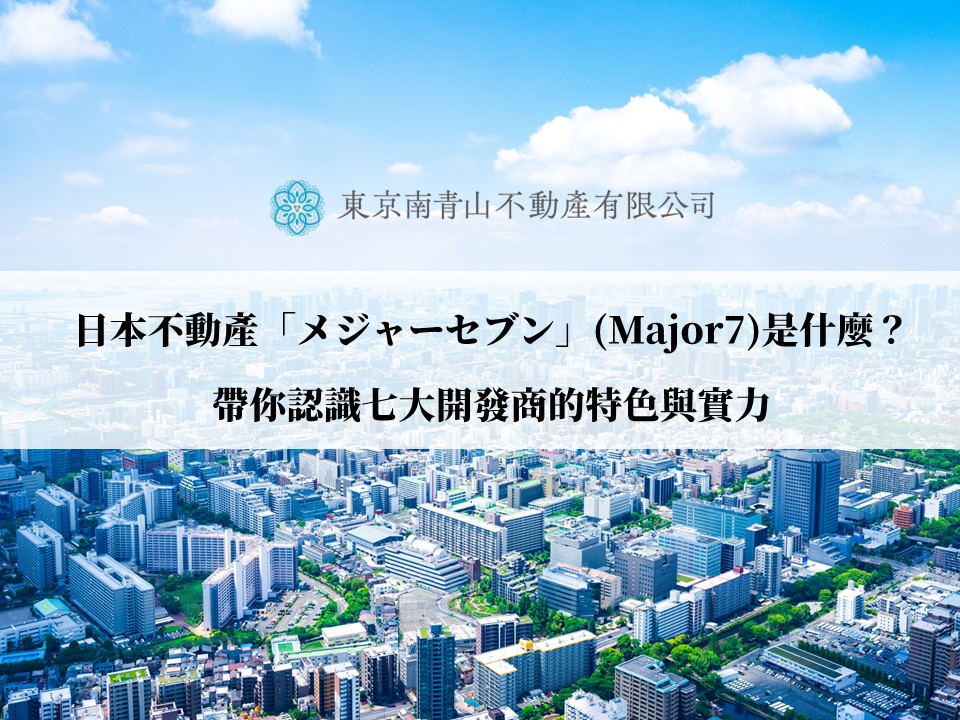Q2 (Jul-Sep 2022) real GDP growth rate (2nd preliminary reports): -0.3% YoY
Q2 real GDP (1st preliminary reports):134 trillion 497.1billion JPY / -1.2% YoY (Source: Cabinet Office)
This is the fifth issue of a report on property-related market information, which was launched in July this year. With entry restrictions related to measures against the new coronavirus having been significantly eased, the number of visitors to Japan in September was 206,500 (estimated number), an increase of 1065% compared to the same month last year. Based on the latest information available as of 22 November 2022, this report mainly provides information on market trends and recent government economic policies in September this year. We hope this will help you to understand the opportunities for buying and selling property.
【1.Details of the 'Comprehensive Economic Policy' approved by the Cabinet under the Kishida Government on 28 October】
The direction of the Japanese economy is often heavily influenced by the various policies of the ruling party. For example, former Prime Minister Abe made smoothing the flow of money to the market and stimulating private investment key policies, and as a result, economic indicators such as stock prices, economic growth, corporate performance and employment showed improvement.
The economic difficulties facing the Japanese economy, namely the continuing inflation of energy and foodstuffs due to rising raw material prices influenced by the global circumstances and the rapid depreciation of the yen due to a combination of factors including the interest rate gap between Japan and the US and other factors, have raised concerns about a global recession. The Government of Japan has stated that in order to put the Japanese economy on a sustainable and higher growth path, comprehensive economic measures are needed to realise the Kishida Government's slogan of 'new capitalism'.
Based on this recognition, the Cabinet decided on 28 October 2022 that the second supplementary budget for FY2022 would be compiled as a comprehensive economic measure to ① tackle rising prices and wage increases, ② restore and strengthen regional 'earning power' by taking advantage of the weak yen, ③ accelerate 'new capitalism', and ④ ensure the safety and security of the people.
The following section looks at the details of the 13th Meeting of the Council on Economic and Fiscal Policy held on 2 November, backed by an aggressive budget, including the expansion of 'investment in people', which is the core of the Kishida Government's key policy of 'new capitalism' that we have been reviewing.
First, regarding ① above. This mainly refers to the expansion of measures to support small and medium-sized enterprises (SMEs) to achieve continuous wage increases to a level that can withstand rising prices, while adopting policies to curb soaring energy and fertiliser prices. ② In order to return the benefits of the weak yen to the people to the maximum extent possible, the government is actively calling for inward direct investment with the aim of stimulating the tourism industry, event demand and local economies, and is also working to create an environment that makes it even easier to invest. In addition, the government aims to increase exports of agricultural, forestry and fisheries products and, while many SMEs have traditionally focused on developing services for domestic supply, it aims to strongly encourage export development and deepen the uptake of foreign demand. ③ aims to expand various types of support for the 0-2 year-old generation, women and lone households, for which support has traditionally been lacking, and calls for the expansion of prenatal and postnatal care, the significant expansion of opportunities for women to play an active role in society, and the establishment of a system to strengthen the consultation system for lone households. Finally, point ④ aims to strengthen the ability to respond to threats caused by infectious diseases, natural disasters and various security environmental factors, and aims to sustainably supplement and strengthen preparedness, policy development and recovery (resilience).
Of the above, the author is particularly interested in point ②. The reason is that the Government is expected to create an environment in which inward direct investment is even easier to carry out, driven by the weak yen, and the real estate sector is likely to particularly reflect this trend. As is well known, the current Japanese property market is undoubtedly attractive to investors from outside Japan, as it is full of properties that are cheaper and higher yielding than in the past. If these conditions improve further, high-quality properties will be purchased first, so it is important to have a system in place to obtain property information quickly. Minami Aoyama Real Estate will continue to develop its business in line with these four pillars, keeping in mind what it can do as a real estate and architectural design company. We believe that our company is fully equipped to do so, and we would be very happy if we could fully meet your demands possible.
The author has been paying attention to the Kishida Government's flagship policy of 'wage increases' and mentions the trend in this report every month. According to the preliminary September Monthly Survey of Labour Statistics (preliminary figures) released on 22 September by the Ministry of Health, Labour and Welfare (MHLW), which was also confirmed last month, total cash salaries (nominal wages) excluding the effect of prices increased by 2.2%, but real wages, including the effect of rising prices, fell for the sixth consecutive month, down 1.2% on the same month last year, slightly higher than the 1.7% decline last month. Although this is a slight increase from last month's 1.7% decline, wages are still not keeping pace with price growth.
Considering this concern, the future course of the above-mentioned 'four pillars' policy will be closely monitored.
【2.Property Market Related Information: Basic Data on a Real Economy】
In the following section, basic real economy information is reviewed.
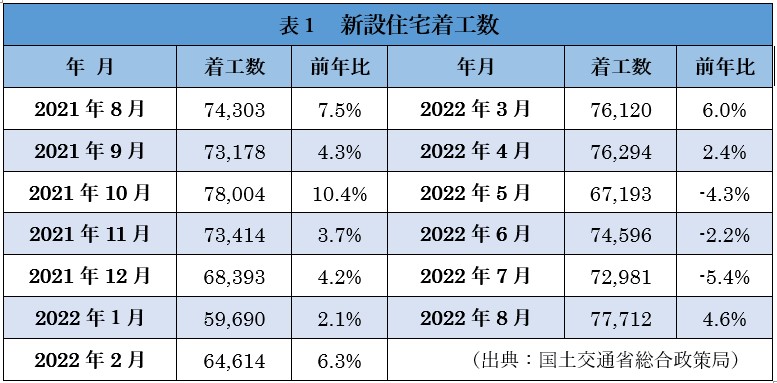
Table 1 shows that new housing starts fell by nearly 4,000 units month-on-month, but increased by 1% year-on-year to 73,920, representing a slight increase for the second consecutive month. The number of owner-occupied dwellings decreased by 13.3% year-on-year to 22,248, marking the 10th consecutive month of year-on-year decline, while the number of houses for rent increased by 8.1% to 30,555, marking the 19th consecutive month of year-on-year increase. In addition, the number of houses for sale increased by 10.0% year-on-year to 28,837, showing an increase for the third consecutive month. Little by little, business that had been stagnant is resuming as With Corona takes root. According to information released on 13 October by Sanko Estate Co, the vacancy rate in the five central wards of Tokyo (Chiyoda, Chuo, Minato, Shinjuku and Shibuya wards) fell for the first time in seven months to 4.7%, and is expected to fall steadily in the future.
Table 2, New condominium market trends limited to Tokyo and the three prefectures, shows a decrease of -11.9% in supply.
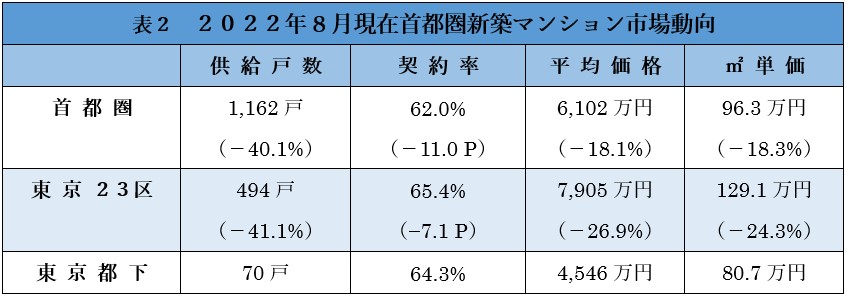
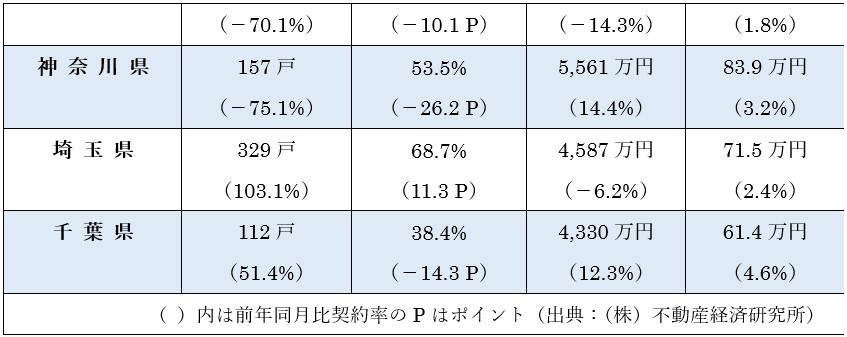
The August quarter showed a significant phenomenon due to a number of model room closures as a result of the spread of corona cases and the sale of a number of condominiums with a high supply of units in the same month of the previous year. In comparison, in the September quarter, the decline in central Tokyo and Saitama Prefecture was not so large, while Kanagawa Prefecture, which had shown a decline of more than 70% in the August quarter, saw a rise of 11.2%. Both Tokyo and Chiba Prefectures, which had previously been on a downward trend, saw a decline of around 30%, but again showed a recovery trend from the 70%+ decline in the previous month.
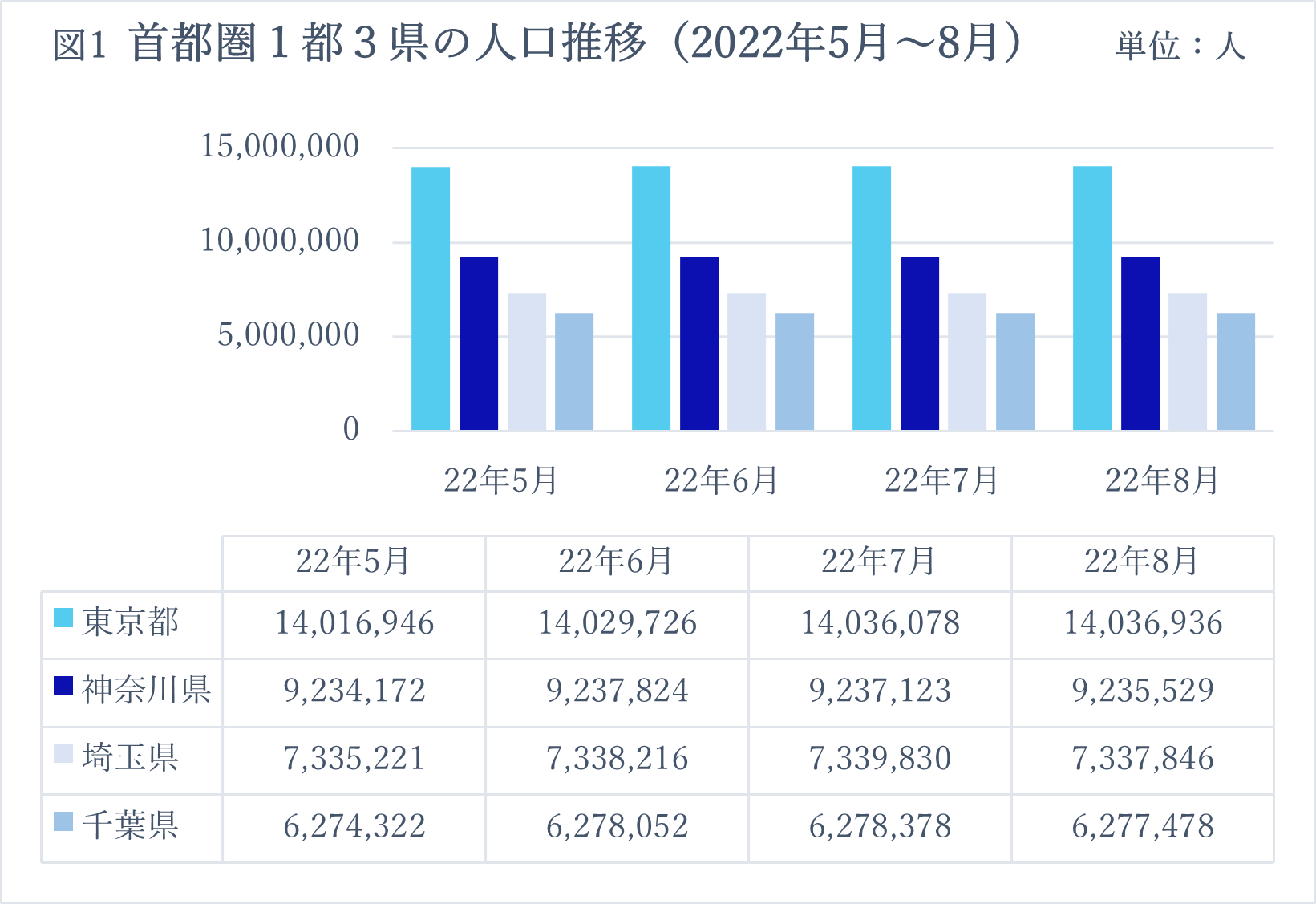
(Source: Compiled by the author based on demographic data from the Tokyo, Kanagawa, Saitama and Chiba city governments / as of 22 November 2022).
The contract rate, on the other hand, rose by 8.6p only in the 23 wards of Tokyo, while all other areas saw a decrease. The average sales price in the 23 wards also increased by 1.8%, indicating the solid strength of the condominium market in Tokyo's 23 wards.
In terms of population change, Tokyo has seen an increase for six consecutive months, while all three other prefectures have seen a slight decrease: the total number of out-migrants in the three prefectures is 3,124, while the number of in-migrants in Tokyo is 207, resulting in an over-migration of 2,917 people in Tokyo and the three prefectures, again indicating an expected out-migration to outside the capital region. Tokyo, Saitama and Chiba prefectures have experienced monthly increases and decreases, while Kanagawa has experienced three consecutive months of excess transfers out. As we will see below, the trend of elderly people selling their owner-occupied houses and submitting to the suburbs in search of a better living environment appears to be increasing, and the data can be used to speculate to some extent on the trend of increased sales.
【3.Information on Property Market Trends: Economic Outlook】
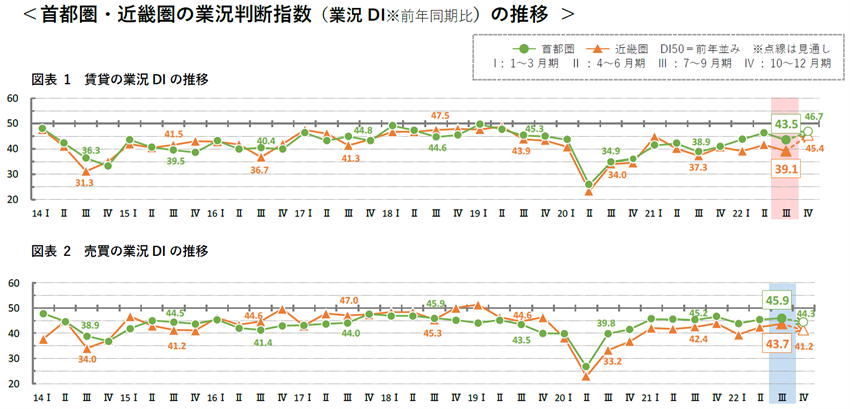
(Source: Adapted from At Home Ltd.)
In this section, the business climate pertaining to the property market is reviewed.
Charts 1 and 2 show business conditions in the local real estate brokerage industry in the period from 18 July to September 2022, as published by At Home Ltd. on 18 November 2022. This is a quarterly survey conducted and published by At Home, a real estate information service company, on economic trends in the residential property distribution market in 14 areas in 13 prefectures across Japan, with more than 50 being in a buoyant state. Diffusion Index: an indicator used to forecast future business confidence and business sentiment) shows that in the Tokyo metropolitan area, the DI for Q4 2022 was 43.5 points, down 2.8 points from approximately 46.3 points in the previous survey, the first decline in four quarters. In the Chart 2 trading DI, the score as of Q4 2022 was 45.9, a slight increase of 0.6 points from the previous quarter's score of 45.3. Quarterly changes over the past year, focusing on these figures for the three prefectures of Tokyo (23 wards and Tokyo metropolis respectively), show that the scores in Saitama Prefecture were 45.3, 43.8, 47.4, 50.7 and 45.4 points, in Chiba Prefecture they were 42.9, 49.1, 49.7, 49.8 and 43.2 points, in the 23 wards of Tokyo 33.8, 38.4 , 41.0, 43.7 and 41.7 points, 40.3, 39.3, 39.2, 48.6 and 42.3 points in the Tokyo metropolitan area, and 43.4, 41.9, 46.6 and 46.7 points in Kanagawa Prefecture. Thus, except in Kanagawa Prefecture, which showed a flat trend, all other prefectures gave negative scores in the 2-6 range across the board. In particular, the Tokyo area showed a significant downward trend, with a decrease of 6.3 points. According to a survey conducted by At Home, business conditions have remained firm in sales and purchases, with demand for suburban migration, the purchase of second-hand properties and investment properties. However, there are also signs of consumers holding off on buying and reviewing conditions due to soaring property prices and uncertainty about the economic outlook. In the rental sector, although the trend of high prices continues, the general recovery trend is being maintained, as With Corona has taken hold and restrictions on behaviour have decreased significantly.
The real estate agencies targeted by the company's survey were of the opinion that 'demand for studio rooms has decreased due to fewer movements of singles' and that 'there is a need to move to slightly larger and cheaper rooms such as 1LDK, but the supply in response is low, making it difficult to decide even if there is demand for singles' rooms'. On the other hand, a number of elderly people reported an increase in the number of enquiries, with an increasing number of them seeking to improve their living environment, including reducing their rent burden, or selling their homes and moving to rented accommodation.
Other comments from real estate agencies picked up by the company included: 'There is no movement of people due to the impact of Corona's 7th group' and 'Rooms for single people such as students and working people in the 50-60,000 yen range are not being decided. There are no vacancies", etc. These voices reflect the figures confirmed above, which can be attributed to the Corona Seventh Faction, the heat wave and uncertainty about the future, and there are also factors attributable to the buyers, such as soaring property prices, and to the sellers, such as holding back sales due to expectations of rising property prices, which are even bigger factors.
However, the author believes that the market should show an upward trend from next season onwards. The reasons for this are that the market has already seen an increase in human activity due to the spread of With Corona, a significant recovery in inbound tourism and an increase in purchasing momentum among residents outside Japan, the continued depreciation of the yen supporting this, and the fact that Japanese property is an attractive product as yields are relatively easy to predict compared to the fluctuating and unstable interest rates of the rest of the world. The reason for this is that Japanese property is an attractive product as it is relatively easy to predict yields compared to volatile and unstable global interest rates.
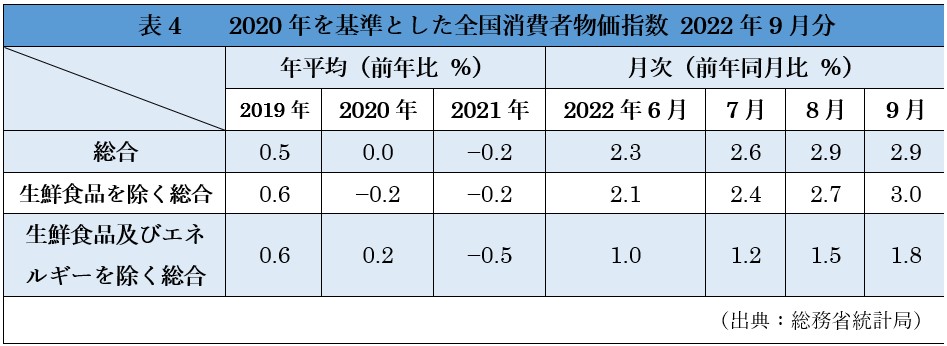
Macro data pertaining to business confidence are then reviewed. Table 4, National Consumer Price Index, shows that the overall value was the same as last month, with the composite excluding fresh food increasing by 0.3% and the composite excluding fresh food and energy also increasing by 0.3%. The composite value still mainly reflects the effects of the traditionally high resource prices and the weak yen, and has exceeded 2% for five consecutive months, and is expected to continue to increase as the effects of both items are passed on to prices in the future.
According to Figure 3, the Cabinet Office Business Conditions Index, the leading index fell 3.9 points ('P') from the previous month, the first fall in two months, while the three-month backward moving average (the high/low value calculated by comparing the figures for the month under study with the average of June, July and August and the average of July, August and September) fell 0.97 points, the first fall in two months. The seven-month backward moving average (high and low values calculated by comparing the figures for the month under study with the averages for February, March, April, May, June, July and August and the averages for March, April, May, June, July, August and September) fell by 0.40 P, the first fall in two months.
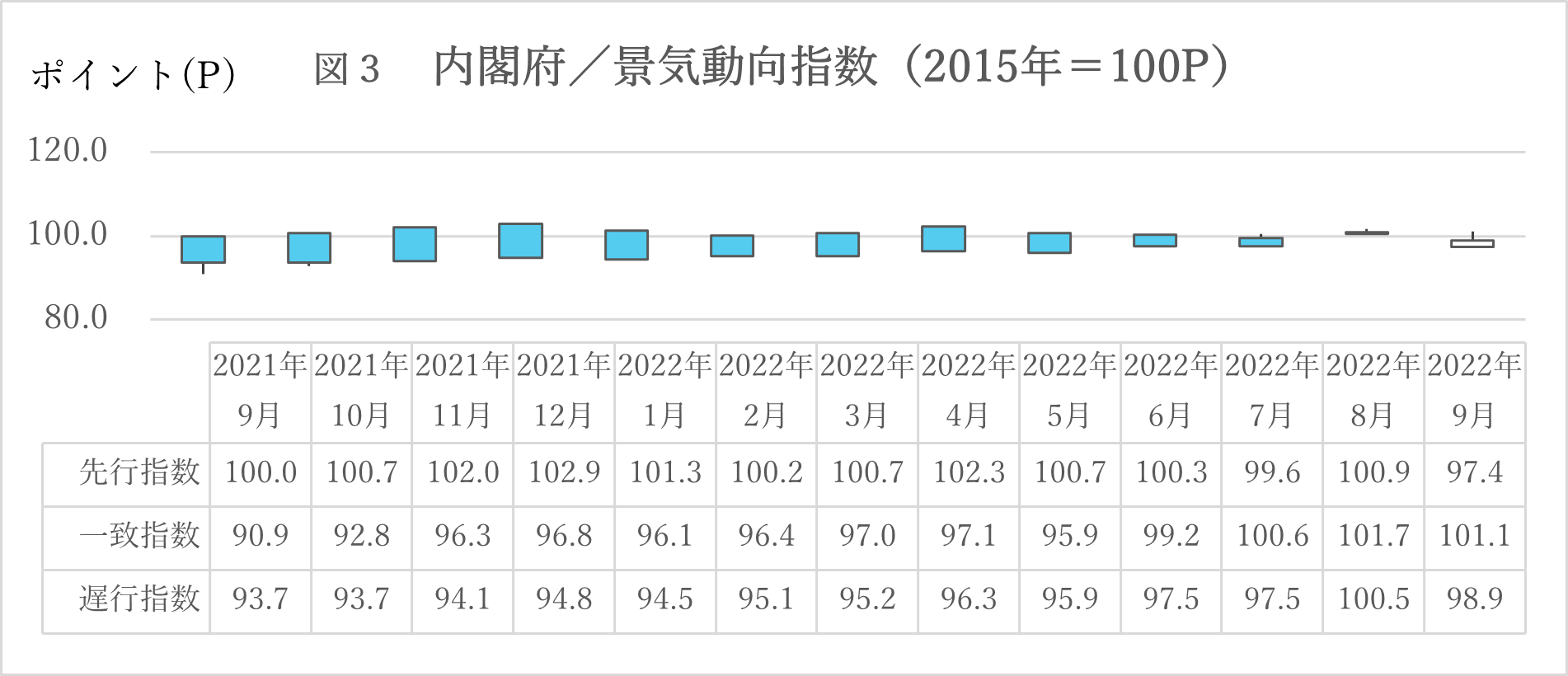
The coincident index fell by 0.7p month-on-month, the first fall in four months; the three-month backward moving average rose by 0.63p, the fourth consecutive monthly rise; the seven-month backward moving average rose by 0.68p, the 11th consecutive monthly rise; and the seven-month backward moving average rose by 0.54p, the 10th consecutive monthly rise.
The lagging index was unchanged month-on-month; the three-month backward moving average rose by 0.43p, its tenth consecutive monthly increase; the seven-month backward moving average rose by 0.54p, its eighth consecutive monthly increase; and the seven-month forward moving average rose by 0.68p, its eleventh consecutive monthly increase.
The leading, coincident and lagging indices all decreased, but the breakdown information showing a downward trend compared to the previous month is as follows. In the leading index, commodity price trends and the total amount of money supplied by the financial sector to the economy (money stock) turned downward; in the coincident index, shipments of industrial production materials declined; and in the lagging index, figures indicating corporate tax revenue and total unemployment rate turned downward. However, the Cabinet Office said that overall business confidence is improving, as the three-month backward moving average in the coincident index has been rising continuously.
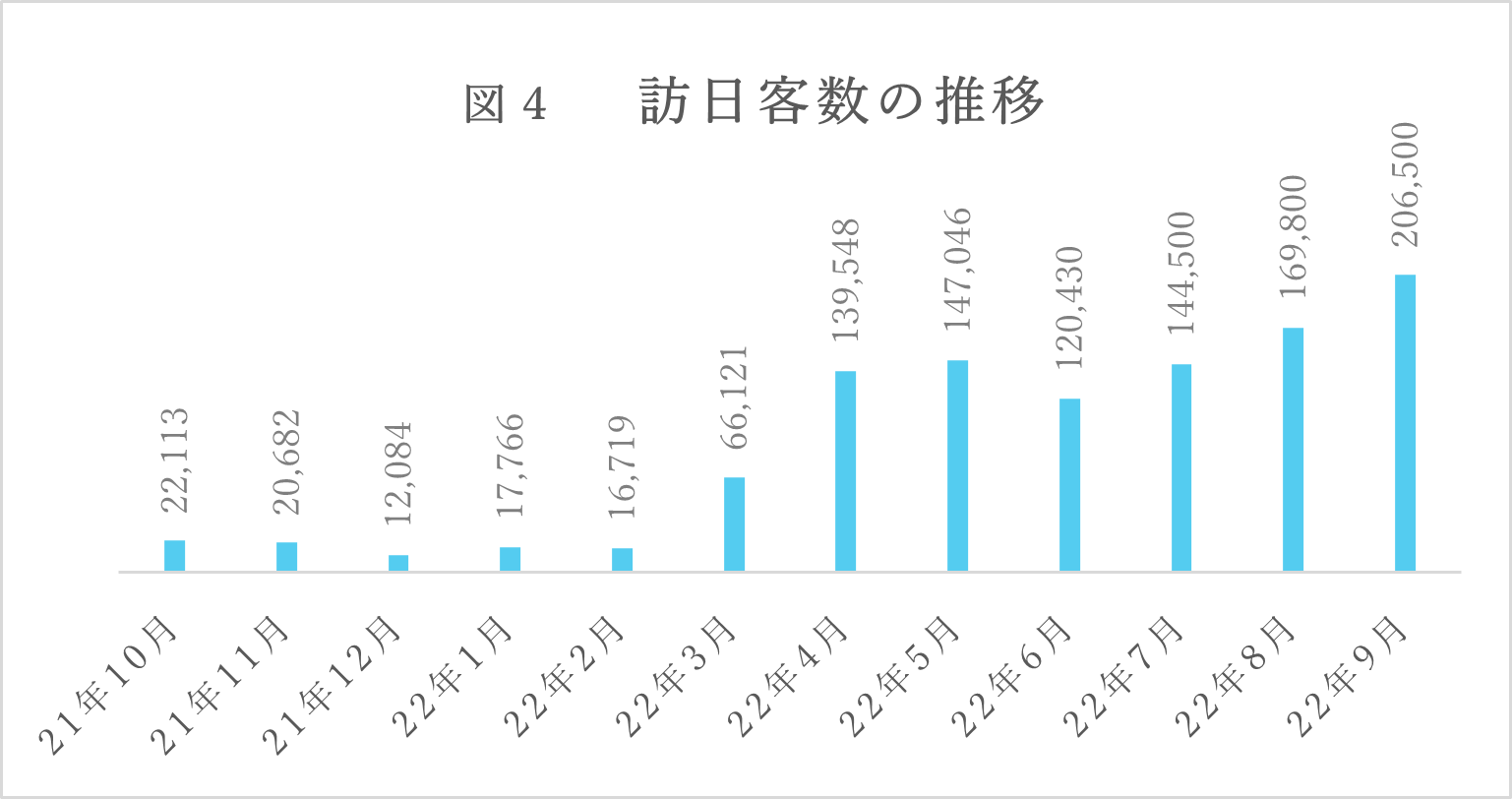
(Source: Japan National Tourist Organisation)
Figure 4 shows the number of visitors to Japan up to September this year. As we have seen in previous issues, this was against the backdrop of the continuation of the government's easing of entry policies. The number of visitors to Japan increased by more than 21% compared to the previous month and is expected to accelerate further as entry restrictions imposed to prevent the spread of new coronas are being eased or abolished worldwide. The number of visitors to Japan recovered to 206,500, almost the same level as in March 2020. As the number of visitors is expected to increase significantly in the future due to the resumption of individual travel for tourism purposes from 11 October, the Government and other organisations have started to rapidly prepare to strengthen various measures to achieve a full-scale recovery of inbound tourism, including the improvement of the local reception environment, accurate dissemination of information on entry and high value-added travel. Many organisations are rapidly beginning to put in place.
【4.Prospects for Future Property Purchases】
The yen's depreciation of approximately 25% year-on-year to 142.05 yen as of 22 November this year (against 114.09 yen the same day last year) has been a distant factor in attracting significant inbound demand, which continues to increase every month, and as confirmed in this report, property owners, including the elderly, are selling more than ever. The strong property-buying momentum, mainly from people outside Japan, is likely to continue for some time to come.


